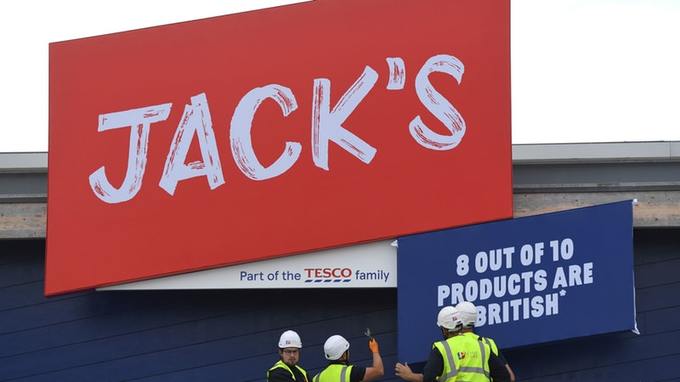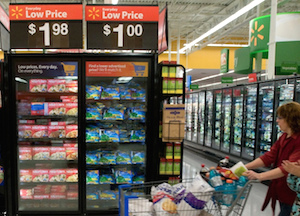 For some time, I’ve been blogging, training, and presenting at conferences; discussing the alarming impact of changes in retail and shopping behavior. For those of you who thought this was mainly an e-commerce thing – time to think again. For those of you who thought that they might be immune to the impact of new channels – hmm… This week Asda and Sainsbury, the number two and number three retailers in the United Kingdom announced their plans to merge. And for those of you who aren’t based in the UK and think this might not be of interest to you – maybe you should read on! There is plenty we can all learn from this (not least that as Asda is owned by Walmart, this must tell us something about Wal-Mart’s global retail strategy too!) This new merger is a symptom of a significant shift in shopping behavior we are seeing globally – so what can we learn about preparing our business for the future? Is your retail strategy robust enough to handle this sort of shock? And if the CEO of Sainsbury is moved to sing “We’re in the money” – who is going to pay for it all?
For some time, I’ve been blogging, training, and presenting at conferences; discussing the alarming impact of changes in retail and shopping behavior. For those of you who thought this was mainly an e-commerce thing – time to think again. For those of you who thought that they might be immune to the impact of new channels – hmm… This week Asda and Sainsbury, the number two and number three retailers in the United Kingdom announced their plans to merge. And for those of you who aren’t based in the UK and think this might not be of interest to you – maybe you should read on! There is plenty we can all learn from this (not least that as Asda is owned by Walmart, this must tell us something about Wal-Mart’s global retail strategy too!) This new merger is a symptom of a significant shift in shopping behavior we are seeing globally – so what can we learn about preparing our business for the future? Is your retail strategy robust enough to handle this sort of shock? And if the CEO of Sainsbury is moved to sing “We’re in the money” – who is going to pay for it all?
Retail Strategy must be driven by changes in shopping behavior
Changes in retail and shopping behavior have been undermining the very foundations of retail and manufacturing businesses. In this case the change is driven largely by the combined impact of e-commerce and discounters. Each market we work in is impacted by different shifts, but all markets have one thing in common. Shopping behavior is changing rapidly and significantly everywhere in the world.
And yet too many seem to have failed to adapt their retail strategy to this new reality, and to be carrying on as if nothing has changed. Yes, some have responded to changes such as e-commerce (often by developing a standalone e-commerce retail strategy). But often the ripples of channel shifts aren’t fully understood or baked into a company’s retail strategy. And so here we have a mega-merger which will create the biggest retail chain in the UK (and one partly owned by global giant Wal-Mart).
What is the big idea behind this retail mega-merger?
The Sainsbury and Asda merger creates a new market leader in the UK. Yet despite the fact that European retail space productivity has declined rapidly, there are no immediate plans to close stores. Why is that? At first blush you’d think that closing stores would be a logical first move. True, the store portfolios are a good geographic fit, with one retailer strong where the other is relatively weak, but still. Part of the reason for keeping stores open may be wrapped up in PR and politics: store closures are typically unpopular with the public and may attract unwanted attention. Perhaps more store closures will come later.
Yet again – it’s all about price
But beyond positioning and politics, there is another reason. Scale! The merger creates a new market leader in the UK, just edging Tesco out in terms of market share. It is clear that scale is seen as a key to winning in these disruptive times. Whether this is correct or flawed, only time will tell. Creating an even larger pile of potentially over-valued retail real estate might not be the smartest move in the longer term, but in the short term, scale is key to delivering against the retailer’s most obvious weapon. Price.
When retailers fight on price, who pays the price?
Yes. Price. The press release was designed to be a crowd pleaser. No store closures and a 10 percent price cut for shoppers. Wait. What? They actually said that? Yes indeed. Shoppers will now pay 10% less apparently. And how do you think that will be funded? Who will pay for that?
That’ll be you, dear suppliers. Yes, I’m sure there will be significant savings in overheads and operating costs. But ten percent? That’s an awful lot to trim out of costs (particularly when you’ve committed to keeping all the stores running, even the underperforming ones!)
How strong is your retail strategy? Are you prepared? Let’s check this out!
Retail disruption is all around us, and the costs are high. Retailers will be looking to their suppliers to foot the bill for their new wars. So how well prepared are you to manage these new demands?
Are your Trading Terms Defensible? A key part of any retail strategy is your trade terms strategy. First question – Are your trading terms defensible? Particularly between Asda and Sainsbury, but for the rest of the world – ask yourself a simple question. If your trading terms agreement with one retailer fell into the hands of another, could you defend every cent? If you can, good on you! If not, be ready! One of the first things that Asda and Sainsbury will do will be to put the two agreements together, and cherry pick the best terms from each.
Are you ready to pay more for the same? The second source of funds will be scale. Asda/Sainsbury will argue that you will save loads on money now that they are bigger and better, so will ask you to improve their terms. Some of what they ask for might be reasonable, but do remember that price drop they will be looking to fund – the money has to come from somewhere!
Are you ready for what Tesco want? Of course, it would be nice if Tesco, now knocked back to the number two slot, were to sit back and watch, but that is unlikely! I assume that they will announce that they will match the prices of the new merged entity. And that won’t be funded out of the kindness of their hearts either. How would your retail strategy be affected if your relationship with Asda, Sainsbury or Tesco was disrupted, or became less profitable?
Have you considered how other cost-cutting measures might impact your business? All retailers will use their perceived (and real) power to push on price. But they are likely to cut costs in other ways. When Tesco found themselves under pressure a few years ago they slashed inventories and ranges. Could more of the same happen? How many of your lines are safe? If Sainsbury/Asda reduced inventories, their suppliers would sell less even if the retailer didn’t. What impact might that have on your business?
Where are you going to cut spend? Even with the best laid plans and perfectly structured trading terms, there is an inevitability about this. Many, if not most manufacturers which supply the new ‘Big Two’ will need to invest more to largely stand still. So where is that money coming from? Which channels are you going to reduce investment in? Hmmm. Tricky huh? Is your retail strategy strong enough guide you through this difficult and dangerous minefield?
Now is the time to start preparing a new retail strategy!
If you deal with Asda and Sainsbury, you need to act now. The merger won’t be finalized for some time, which is a relief, as there is lots to work on. Please get in touch – we’ve plenty of experience in handling situations like this from mergers in other parts of the world.
And for those of you who aren’t in the UK, or don’t sell to Asda or Sainsbury, then maybe you should take this as a sign to start getting ready for the tidal waves of retail disruption that are headed your before they swamp you. There are a number of key steps which can be taken to future proof your retail strategy. Build better and more comprehensive retail understanding. Develop better shopper insight and real shopper and channel strategies. Re-evaluate all of your retail investment. The list goes on. Get in touch now to learn about how we can help prepare your business and team for what is coming next.





